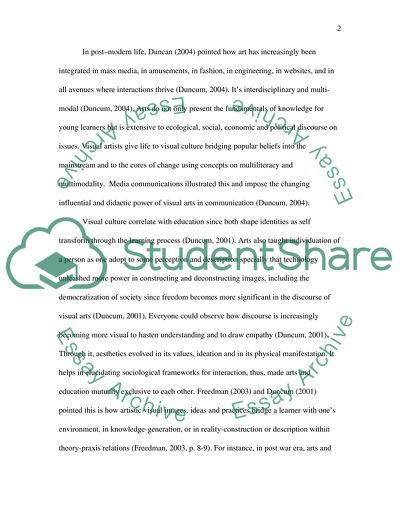Cite this document
(Visual Arts as a Kind of Art Assignment Example | Topics and Well Written Essays - 1750 words, n.d.)
Visual Arts as a Kind of Art Assignment Example | Topics and Well Written Essays - 1750 words. Retrieved from https://studentshare.org/visual-arts-film-studies/1770915-art-education
Visual Arts as a Kind of Art Assignment Example | Topics and Well Written Essays - 1750 words. Retrieved from https://studentshare.org/visual-arts-film-studies/1770915-art-education
(Visual Arts As a Kind of Art Assignment Example | Topics and Well Written Essays - 1750 Words)
Visual Arts As a Kind of Art Assignment Example | Topics and Well Written Essays - 1750 Words. https://studentshare.org/visual-arts-film-studies/1770915-art-education.
Visual Arts As a Kind of Art Assignment Example | Topics and Well Written Essays - 1750 Words. https://studentshare.org/visual-arts-film-studies/1770915-art-education.
“Visual Arts As a Kind of Art Assignment Example | Topics and Well Written Essays - 1750 Words”, n.d. https://studentshare.org/visual-arts-film-studies/1770915-art-education.


